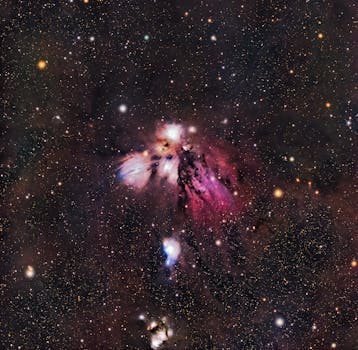
“
Beyond the Milky Way: Imagining New Worlds and Possibilities
Introduction to the Cosmos
Beyond the Milky Way: Imagining New Worlds and Possibilities is an idea that has fascinated humans for centuries. The universe is vast and full of mysteries, and the possibility of discovering new worlds and civilizations is a tantalizing prospect. With the advancement of technology and space exploration, we are now closer than ever to unlocking the secrets of the cosmos.
The Milky Way is just one of the billions of galaxies in the observable universe, and each galaxy contains billions of stars and potentially habitable planets. The sheer scale of the universe is mind-boggling, and the potential for life beyond Earth is a topic of ongoing research and debate. For an imaginative exploration of what lies beyond, check out Soaring Through the Cosmos: The Power of Imagination Beyond the Stars.
Exploring the Galaxy
Our galaxy, the Milky Way, is a barred spiral galaxy that is estimated to contain between 200 and 400 billion stars. The galaxy is thought to have formed around 13.6 billion years ago, during the early days of the universe, and has been evolving ever since. The Milky Way is not alone in the universe; it is part of the Local Group of galaxies, which also includes the Andromeda Galaxy and several smaller galaxies.
Beyond the Milky Way, there are countless other galaxies, each with its own unique characteristics and features. Some galaxies are similar to the Milky Way, while others are vastly different, with different shapes, sizes, and compositions. The study of galaxies is an active area of research, with scientists using a variety of techniques, including observations, simulations, and theoretical models, to understand the formation and evolution of galaxies. For more on the creativity involved in exploring these realms, read Galaxies of Dreams: How Imagination Transcends the Night Sky.
Imagining New Worlds
The possibility of discovering new worlds and civilizations is a topic of great interest and speculation. With the discovery of exoplanets, which are planets that orbit stars other than the Sun, the possibility of finding life beyond Earth has become more plausible. Many of these exoplanets are believed to be located in the habitable zones of their respective stars, which means that they could potentially support life. For insights into the imagination behind these discoveries, consider From Stardust to Dreams: Imagining Life Beyond the Stars.
Imagining new worlds and possibilities is not just limited to the discovery of exoplanets; it also involves considering the potential for life on other celestial bodies, such as moons and asteroids. The moons of Jupiter and Saturn, for example, are thought to have subsurface oceans, which could potentially support life. The search for life beyond Earth is an ongoing effort, with scientists using a variety of techniques, including observations, experiments, and theoretical models, to search for signs of life.
Takeaways
- The universe is vast and full of mysteries, and the possibility of discovering new worlds and civilizations is a tantalizing prospect.
- The Milky Way is just one of the billions of galaxies in the observable universe, and each galaxy contains billions of stars and potentially habitable planets.
- The study of galaxies is an active area of research, with scientists using a variety of techniques to understand the formation and evolution of galaxies.
- The possibility of discovering new worlds and civilizations is a topic of great interest and speculation, with the discovery of exoplanets and the potential for life on other celestial bodies.






